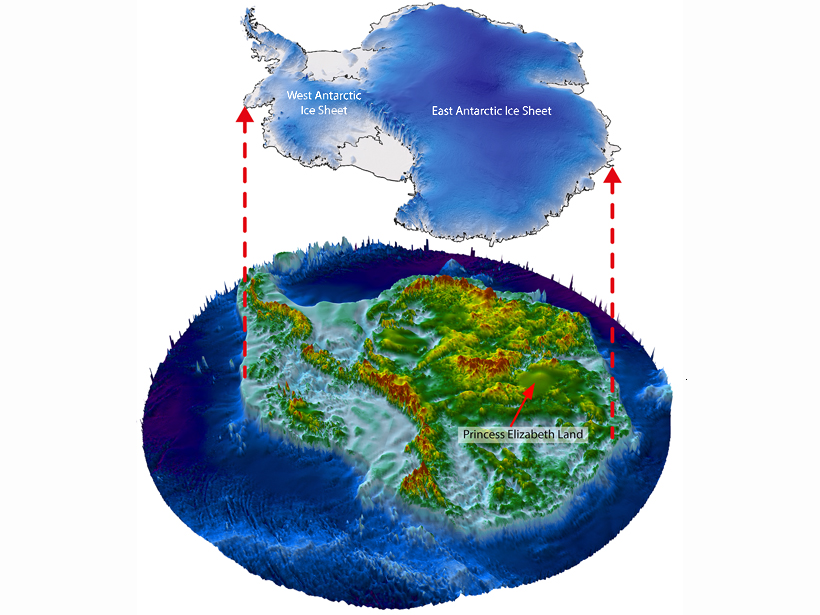A system of canyons may span 1100 kilometers or more and could include the largest canyon on Earth.
Beneath the vast Antarctic ice sheet lies the hidden topology of a frozen world, from glacial lakes to buried mountain ranges. Scientists recently discovered a geological treasure trove in the little-explored Princess Elizabeth Land region of East Antarctica—a system of canyons that may span 1100 kilometers or more and could include the largest canyon on Earth, according to a new study in Geology.
For the past half century, scientists have been exploring the continent’s subglacial landscape, attracted by the novelty of the untouched region. By mapping the underlying landscape—one of two major subglacial landscapes in East Antarctica yet to be visualized—researchers also hope to improve computer simulations of Antarctic ice flow. “If we want to better predict how the ice sheet is going to respond to changes in climate, then we need to be able to input an accurate idea of what the bed topography looks like,” said Stewart Jamieson, a glacial geologist at Durham University in the United Kingdom, who led the study.
Peering Past the Ice
Jamieson and his team didn’t visit Antarctica but used satellite observations of the Princess Elizabeth Land region of the ice sheet to guide their mapping project. They highlighted light and dark contrasts in the satellite data. From other studies, they knew that these contrasts suggest changes in the characteristics and surface morphology of the ice—indicating likely locations for canyons below. They then used the data from a few previous surveys, which used radar to actually see through the ice, to test their predictions of the under-ice topography and determine the depth of the canyons.
The researchers cannot tell so far where one canyon ends and the next begins.
The team’s analysis suggests that the ice harbors a subglacial lake covering as much as 1250 square kilometers and a series of canyons that extends farther than the length of the Grand Canyon and could be as deep as 1 kilometer. However, the researchers cannot tell from mapping data collected so far where one canyon ends and the next begins, Jamieson said. That leaves open the possibility that a canyon larger than any other in the world runs through the area.
Currently, a team of Chinese and American researchers is flying across the Princess Elizabeth Land region, conducting radar observations through the ice to gather more data needed to confirm the existence of the canyons and the lake. Jamieson said further studies will flesh out details of those subglacial features.
—Shannon Kelleher, Writer Intern
Citation: Kelleher, S. (2016), Antarctic ice may harbor huge network of canyons, Eos, 97, doi:10.1029/2016EO044233. Published on 22 January 2016.
Text © 2016. The authors. CC BY-NC 3.0
Except where otherwise noted, images are subject to copyright. Any reuse without express permission from the copyright owner is prohibited.

